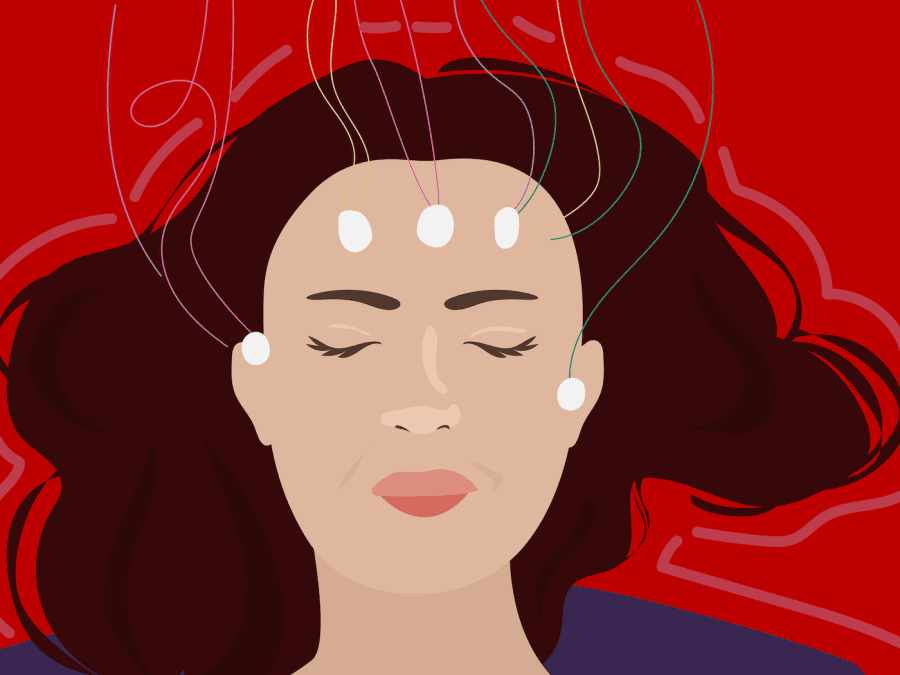Patients remain conscious during cardiac arrest, NYU study finds
The study is the first to find potential evidence of conscious thoughts during near-death experiences and found brain waves associated with high-level thinking up to an hour into CPR.
Research indicates that patients remain conscious during cardiac arrest. (Illustration by Susan Behrends Valenzuela)
December 6, 2022
One in five people who survive cardiac arrest have conscious lucid experiences during the episode, according to a recent study conducted by researchers at NYU’s Grossman School of Medicine. Sam Parnia, the study’s lead investigator and the director of Critical Care and Resuscitation Research at Grossman, led the study, called AWARE II — the first to directly observe evidence of conscious thoughts during near-death experiences.
“From the perspective of the doctors and the nurses and people who are involved in resuscitating them, they look like they’re dead or in a very deep coma, but actually, the reality of it is that they have this sense of lucid consciousness, even though they’re going through death,” Parnia said.
Drawing from a pool of 567 men and women who went into cardiac arrest and received CPR in hospitals, the team used an EEG to monitor brain activity and placed headphones in patients’ ears to monitor their consciousness. Even up to an hour into CPR, the team recorded spikes in brain waves usually correlated with higher mental functions.
While dying, 39% of patients were able to recall events of their memories in a subjectively meaningful “lucid life review,” which allows the patient to analyze their thoughts, feelings and actions toward others. Despite being aware of these phenomena, patients did not experience distress or pain.
These results come after years of research Parnia began in medical school. He initially became interested in the question of death after watching a patient he had grown close to flatline.
“As I was watching, I suddenly realized this was the same guy that I had been talking to half an hour earlier,” Parnia said. “A number of questions zipped through my mind: ‘What happened to this sweet man that I was talking to? What happened to his consciousness? Is it gone? Is it gone forever?’ I was very much affected by that.”
With the initial goal of finding treatments that would allow him to bring people back to life while preventing brain injury, Parnia began his research into near-death experiences by examining three potential explanations for the phenomenon. He thought near-death experiences could be hallucinations upon death due to lack of oxygen to the brain, psychological imagination of things prior to a traumatic experience, or consciousness separating itself from the body. Due to his research, Parnia has settled on the third theory.
“Somehow, their consciousness separates from the brain when they’re at death,” Parnia said. “The brakes are removed because the brain is shutting down and you’re getting access to all this information. What we’ve come to understand is that our understanding of death is really incorrect.”
The AWARE II study is ongoing and seeks to further expand medical knowledge of near-death experiences by observing individuals experiencing near-death states.
Contact Bryn Borzillo at [email protected].
























































































































































